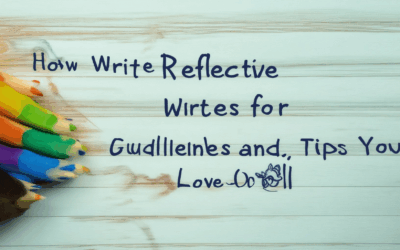Are you looking to master the art of crafting compelling narratives through reflective storytelling? Whether you’re a seasoned writer or someone exploring new creative avenues, reflective storytelling offers a unique way to transform your experiences into meaningful and impactful stories. This guide delves into the essence of reflective storytelling, providing insights, techniques, and examples to help you unlock its full potential. From understanding the core components of storytelling to exploring practical writing strategies, we’ll walk you through everything you need to know to create reflective stories that resonate with your audience. Join us as we uncover the secrets behind one of the most powerful forms of self-expression and storytelling.
Key Takeaways
– Craft Compelling Narratives: Learn to harness the power of reflective storytelling to create engaging, meaningful content.
– Choose a Central Theme: Select a theme that resonates personally and invites universal connection, such as personal growth or overcoming challenges.
– Start with a Personal Anecdote: Begin with a genuine story to build authenticity and reader connection.
– Explore Emotions and Insights: Delve into your feelings and experiences to add depth and relatability to your writing.
– Connect to Broader Themes: Relate your story to common experiences, fostering empathy and community.
– Analyze and Reflect: Gain insights by critically examining your experiences and their impact on your growth.
– Share Growth and Learning: Inspire others by highlighting your evolution and the lessons you’ve learned.
– Conclude with Purpose: End with forward-looking intentions to leave readers motivated and inspired.
– Edit for Clarity: Refine your work to ensure it flows naturally and resonates emotionally.
– Master the 5 R’s: Use Reporting, Responding, Relating, Reasoning, and Reconstructing to enhance reflective writing skills.
– Engage with Strong Openings: Capture attention with personal reflections, surprising insights, universal statements, or compelling anecdotes.
These takeaways empower readers to create reflective content that is both deeply personal and universally relatable, driving engagement and providing valuable insights.

The Five Cs of Storytelling
The 5 Cs of storytelling provide a structured approach to creating engaging narratives. These components are essential for crafting a compelling story:
- Character : Develop well-defined protagonists and antagonists who drive the plot forward. Their growth and development should be evident throughout the story.
- Conflict : Establish a central conflict or problem that propels the narrative. This could be internal, external, or both, serving as the driving force of the story.
- Cause : Identify the underlying causes of the conflict. Explore how and why the problem arose, adding depth and context to the story.
- Context : Set the scene with rich details about the time, place, and cultural background, immersing the reader in the story’s world.
- Connection : Create an emotional bond between the story and its audience. This connection ensures the narrative resonates on a personal level, leaving a lasting impact.
By focusing on these five elements, storytellers can craft stories that captivate audiences and leave a meaningful impression.
Reflective Storytelling
Reflective storytelling is a powerful art form that involves pausing to assess, understand, and contextualize experiences. This practice allows individuals to develop a deeper understanding of themselves and the world around them.
Definition
Reflective storytelling is the process of sharing personal narratives with intentionality and depth. It goes beyond mere recounting events to exploring emotions, motivations, and broader life lessons.
Importance
Engaging in reflective storytelling can foster self-awareness, empathy, and connection. By examining one’s own experiences, individuals can identify patterns, learn from mistakes, and grow personally and intellectually.
Techniques
- Pause and Reflect: Take time to analyze experiences before sharing them.
- Contextualize: Place events within a larger narrative or timeline.
- Explore Emotions: Delve into feelings and reactions to uncover underlying meanings.
- Seek Feedback: Share stories with others to gain new perspectives.
Examples
Reflective storytelling often revolves around universal themes like love, loss, identity, or transformation. A well-told story might reveal how a challenging experience led to personal growth or changed the teller’s outlook on life.
Getting Started
Whether through journaling, conversations, or creative writing, reflective storytelling invites introspection and connection. Platforms like Silken Drum’s creative writing section offer spaces to explore these narratives.
Join our community today and embark on your journey of reflective storytelling. Together, we can inspire and support each other in crafting meaningful tales that resonate deeply with others.

The 5 P’s of Storytelling
Storytelling is a powerful art form that captivates audiences and conveys meaningful messages effectively. To craft a compelling story, many experts recommend focusing on the “5 P’s” of storytelling. These elements work together to create immersive and memorable experiences:
- People: At the heart of every great story are relatable and multifaceted characters. Whether they’re heroes, villains, or ordinary individuals, people drive the narrative forward and resonate deeply with listeners.
- Place: Setting plays a crucial role in establishing the tone and context of a story. From bustling cities to serene landscapes, the environment shapes the story’s mood and provides a backdrop for the action.
- Pictures: Visual elements, whether through descriptions or imagery, enhance the storytelling experience. These visuals help paint a vivid picture in the listener’s mind, making the story more tangible.
- Personalization: Tailoring the story to the audience’s interests and experiences makes it more engaging. Personalized narratives feel authentic and connect more deeply with the audience.
- Peril: Introducing conflict or challenge adds drama and keeps the audience hooked. Whether it’s an external threat or an internal struggle, peril propels the story forward and creates tension.
Silken Drum encourages writers to explore these elements to craft stories that inspire and transform. By focusing on the 5 P’s, you can create narratives that resonate long after the final word is spoken. Explore more tips and resources on our platform to unlock your creative potential.

How to Write a Reflective Blog
Reflective blogging is a powerful way to share your thoughts, emotions, and experiences while fostering introspection and connection with your audience. Here’s a step-by-step guide to crafting an effective reflective blog post:
1. Choose Your Theme
Start by selecting a central theme or topic that resonates with you personally. Themes could include personal growth, overcoming challenges, learning from mistakes, or exploring a passion project. The theme should be something that invites others to relate to your journey.
2. Share a Personal Anecdote
Begin your post with a personal story or anecdote. This sets the stage for reflection and allows readers to connect with you on a human level. Whether it’s a triumph, a struggle, or a moment of doubt, authenticity is key.
3. Explore Emotions and Insights
Take time to delve into your emotions and unpack your experiences. Reflect on what you’ve learned, how you’ve grown, and what you’d do differently if given the chance. This exploration adds depth and vulnerability to your writing, making it more relatable.
4. Connect to Universal Themes
While your story may be personal, aim to connect it to broader themes or experiences that many people can identify with. This helps readers see themselves in your narrative, fostering empathy and a sense of community.
5. Analyze and Reflect
After sharing your story, analyze it thoughtfully. Consider the lessons you’ve learned, the patterns in your behavior, and how these experiences have shaped your perspective. This analysis can reveal new insights and provide valuable takeaways for your readers.
6. Share Your Growth and Learning
Reflect on how you’ve evolved as a result of your experiences. Discuss any mistakes you’ve made, challenges you’ve overcome, and how these have contributed to your personal growth. Highlighting your journey can inspire others to embrace their own growth opportunities.
7. Conclude with Intentions or Looking Forward
End your post by sharing your intentions moving forward or how you plan to apply what you’ve learned. This forward-looking perspective shows maturity and purpose, leaving readers motivated and inspired.
8. Edit and Polish
Before publishing, review your post for clarity, coherence, and emotional resonance. Ensure your writing flows naturally and that each section builds upon the last. Edit out any unnecessary details and tighten your prose for maximum impact.
By following these steps, you’ll create a reflective blog post that is both deeply personal and universally relatable. Remember, the goal is to invite readers into your world, offering them a glimpse into your mind and heart while providing them with valuable insights and inspiration.
The 5 R’s of Reflective Writing
The process of reflective writing can be broken down into five key components, often referred to as the 5 R’s. These steps help writers analyze their experiences, understand their growth, and articulate their learning outcomes effectively.
- Reporting :
Begin by documenting the details of your experience. This involves recording facts, observations, and specific instances that occurred. Effective reporting ensures that your reflection is grounded in real events and provides a clear foundation for deeper analysis. - Responding :
After reporting, reflect on your emotions and reactions to the experience. Consider questions like “What did I feel at the time?” and “How did this affect me?” Responding helps you connect your external experiences with your internal state, offering insight into your personal development. - Relating :
Next, explore how this experience relates to broader themes or concepts. Reflect on similarities to past experiences, cultural contexts, or universal principles. This step deepens your understanding by situating your experience within a larger framework. - Reasoning :
Analyze the underlying causes and implications of your experience. Consider why certain events unfolded the way they did and what decisions influenced the outcome. Reasoning allows you to critique your actions and identify lessons learned. - Reconstructing :
Finally, reconstruct your understanding by synthesizing these insights into a coherent narrative. This step involves organizing your thoughts, eliminating redundancies, and presenting your reflection in a clear, concise manner. Reconstruction ensures your reflection is not only personal but also accessible to others.
By following these five steps, reflective writing becomes a powerful tool for self-awareness, growth, and continuous improvement.

What is a good opening sentence for a reflective essay?
A reflective essay opens with a personal, introspective statement that invites the reader to connect with your perspective. Effective openings often reveal your unique viewpoint or spark curiosity. Here are some strategies:
- Personal Reflection: Start with “For me” or “I believe” to establish a personal tone. Example: “For me, the journey of self-discovery has been…”
- Surprising Fact or Insight: Begin with an unexpected revelation to grab attention. Example: “I never imagined that my struggles with…”
- Universal Statement: Use a broad observation that many readers can relate to. Example: “We all face moments where we feel lost in life…”
- Storytelling Approach: Start with a brief anecdote or scene that sets the tone. Example: “One evening, as I sat by the window, I realized…”
Choose an opener that aligns with your essay’s purpose and audience. For instance, a universal statement might resonate with a broader readership, while a personal reflection could make your essay feel more intimate.
Explore more tips on crafting engaging reflective essays on Silken Drum’s blog .




0 Comments